In 1910 and 1911 in Germany Dräger introduced two new breathing apparatus. One for the Rettungswesen and the first rebreather for underwater purpopses.
This page offers information about the 1910_1911 Halbstunden Gerat.
The unit is the improved version of the 1904_1905 gerat and can be recognised by the distinguished face piece showing 3 metal bars, one vertical and two horizontal.
Also another important reference is this newer model has one vertical oxygen bottle
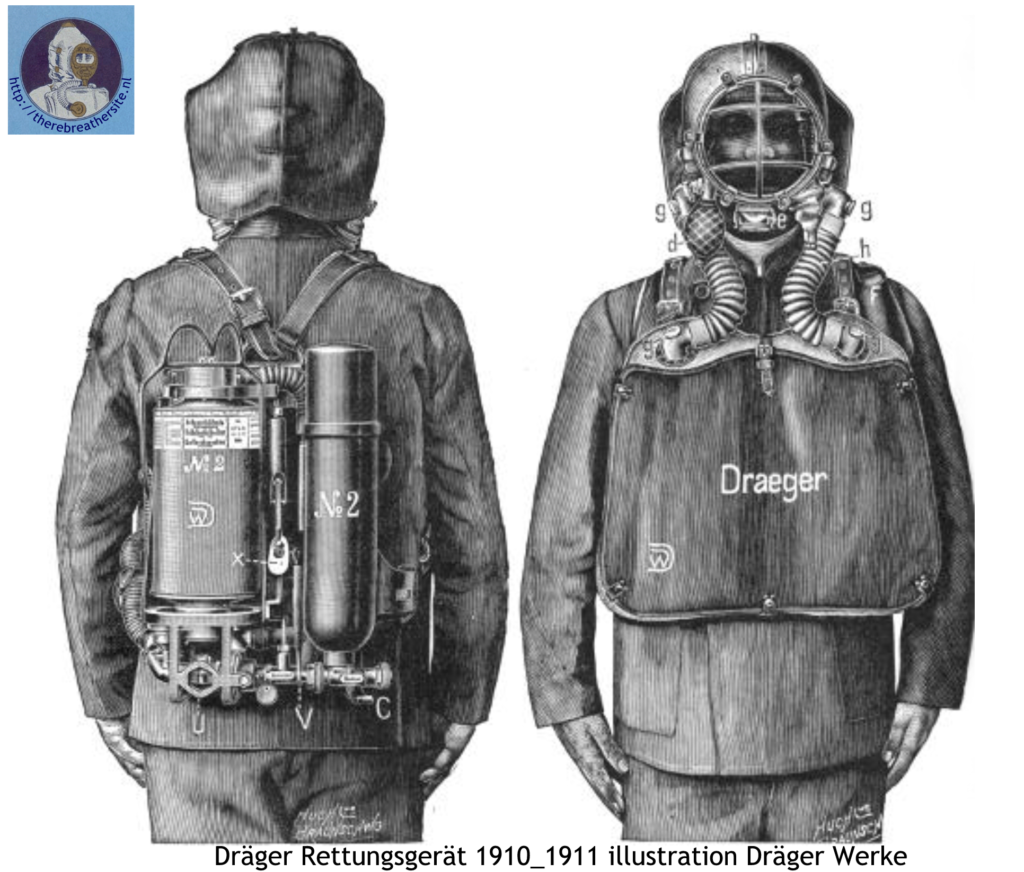
This unit is one of the rebreather systems that has an injection system. One of the features that caused years of debate between Germany and the UK about the best system.
The injector system forces gas into a recycling loop helping to reduce breathiing resistance in the loop. Also this model has a front mounted counterlung. The counterlung has a split in the middle this way separating fresh and used oxygen.
The counterlung has attachement point on the upperside to connect to the directional valves mounted in the metal mask. On the left bottomside for the wearer a dual set of hoses lead to the scrubber and gassupply.
The unit was equipped with a 2 to 2,1 ltr oxygen bottle containing 150 bar resulting in 300 ltrs of oxygen.
The scrubber was mounted in a connection that enables the users to switch a cartridge while in smoke (fast exchange mechanism).
Dräger build two models, one for one hour and one for two hour use.
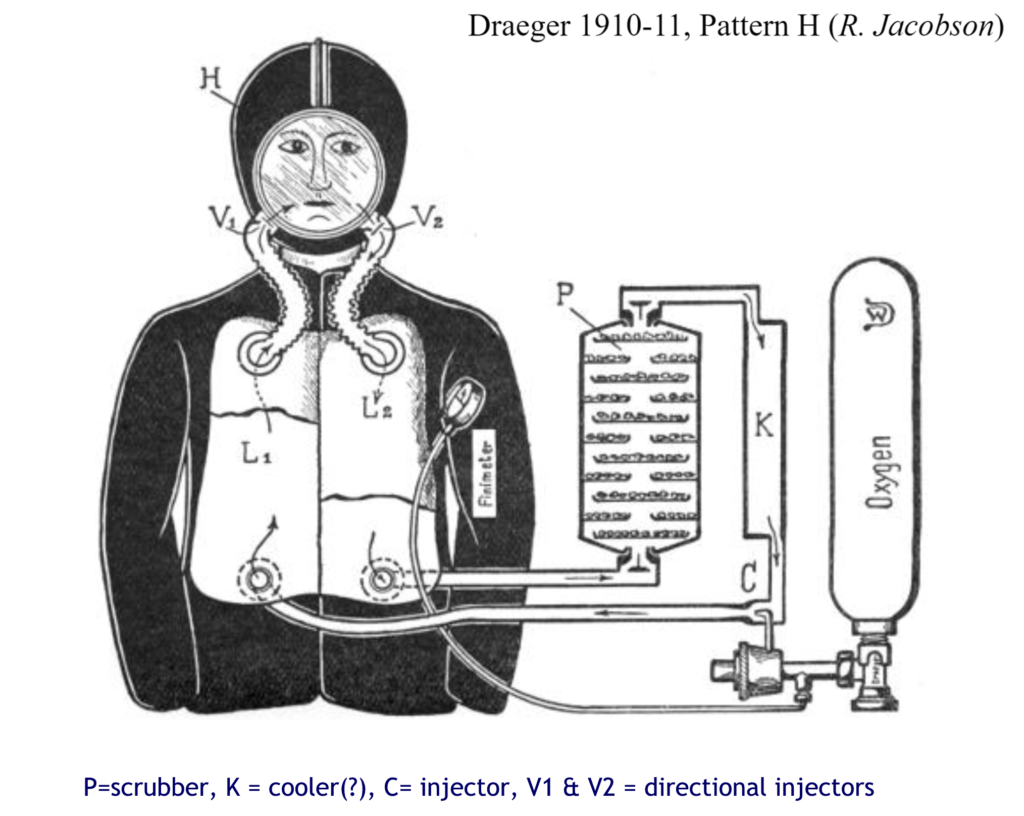
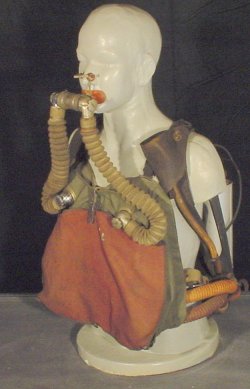
The 1910_1911 model was available in two models, equipped with mask or with mouthbreathing through a mouthpiece. In the above picture you can clearly see the hose routing and finimeter.
The unit weight was 15,5 – 18,5 kgs

Another schematic of the system, that sometimes also is called Saugdüsengerät Dräger (suction nozzle unit).
The injector provided 2 ltr/min oxygen enough for average working conditions.
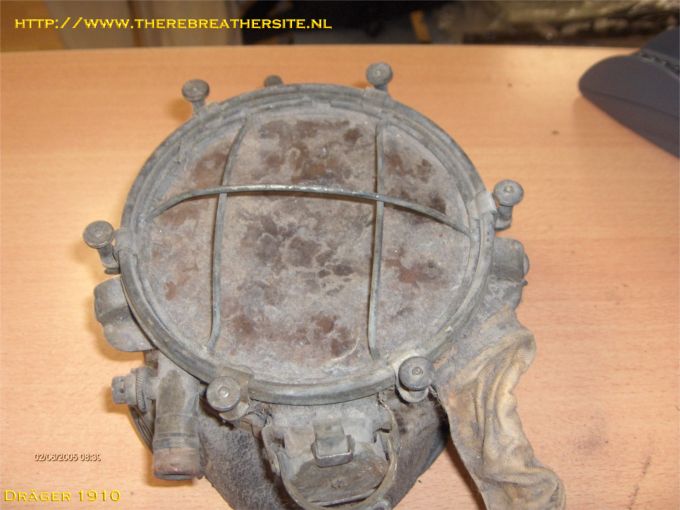
This beautiful mask provided by David Johnson of Mining Artifacts shows some interesting features.
First of all we see the window has been 90 degrees rotated, the mask should be positioned with the single bar in vertical position.
Also we see a fresh air valve in the middle near the chin, presumable to be opened when the system is not in working condition (i.e. preparation phase).
The Helmet was equipped with a pneumatic seal, that could be inflated with a small below.
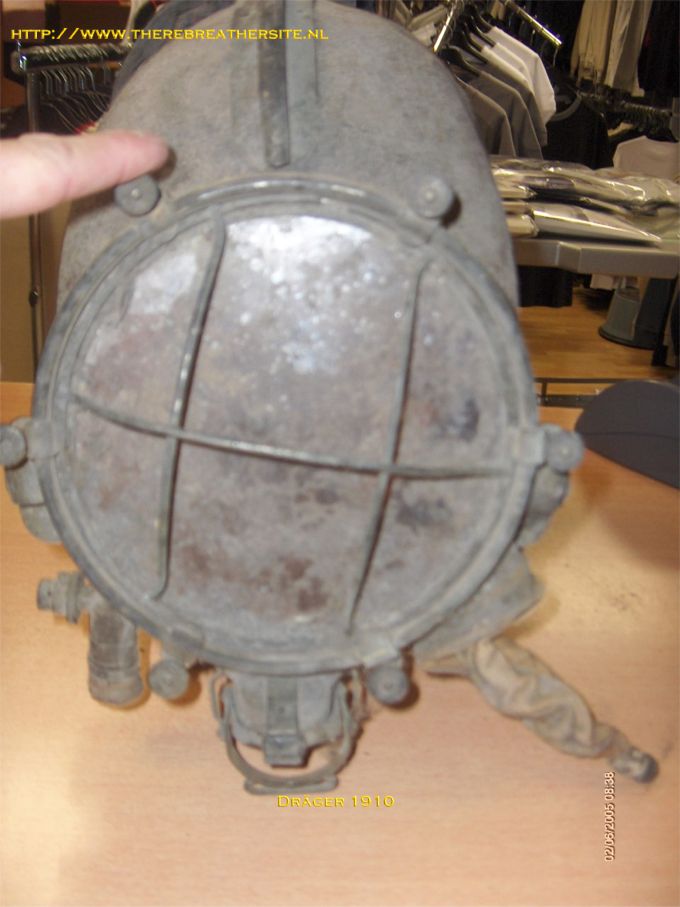
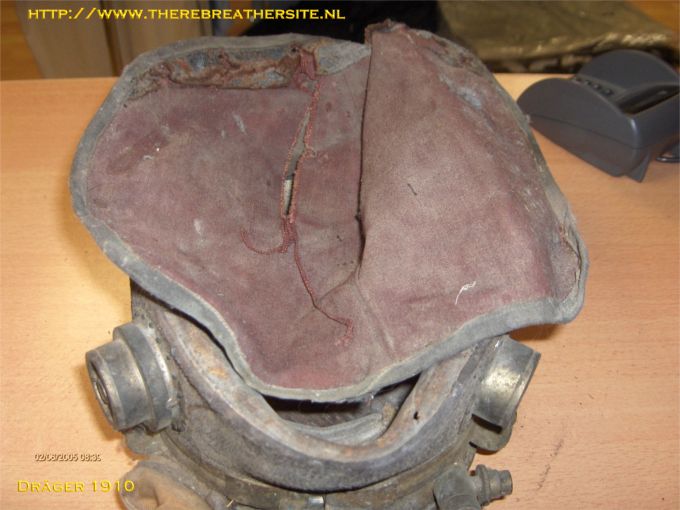
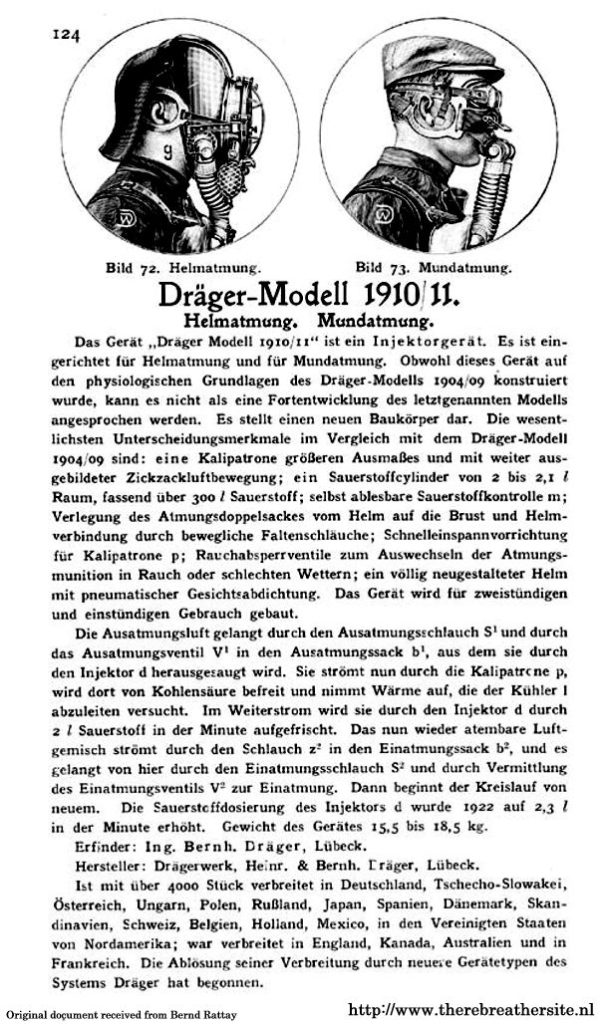
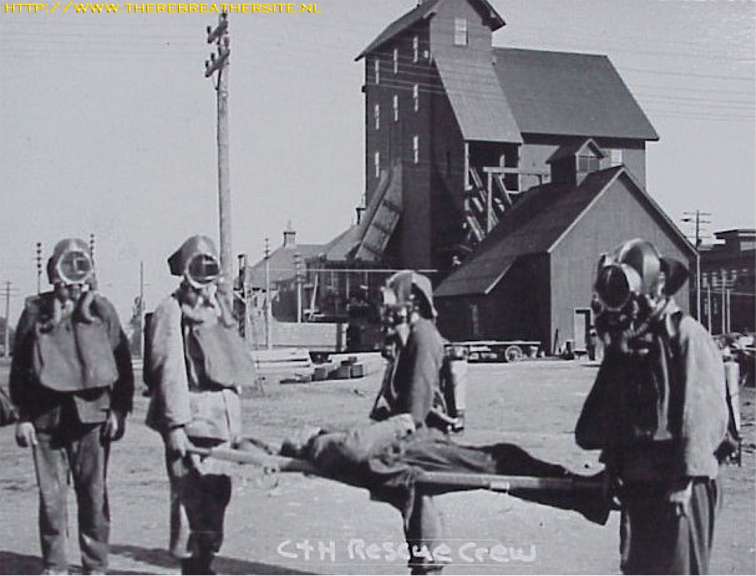
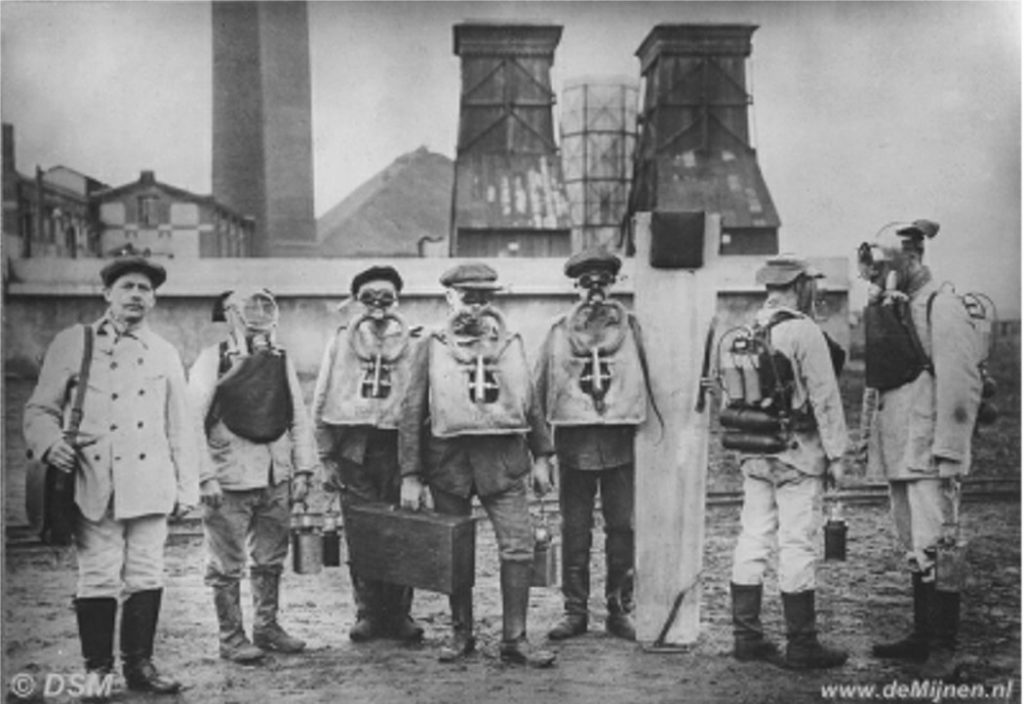
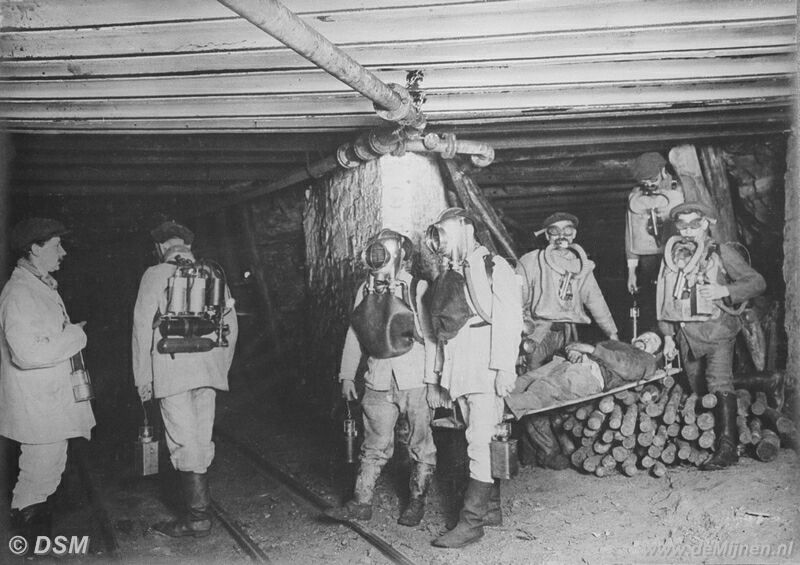
courtesy DSM : 1917 Staatsmijn Wilhelmina, Netherlands
This unique picture shows several units and seems to be made before 1910. The units to the right look like the Dräger model 1904_1905 due to the two horizontal bottles.
The second diver to the left has an earlier Dräger model because the hoses run to the back directly from the mask, and the counterlung seems to be connected to the mask in the middle.
courtesy DSM : 1917 Staatsmijn Wilhelmina, Netherlands
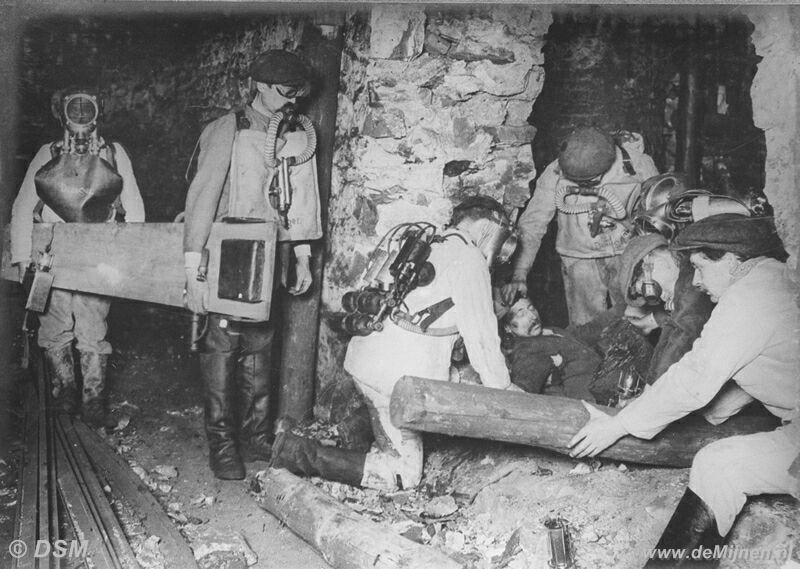
courtesy DSM : 1917 Staatsmijn Wilhelmina, Netherlands
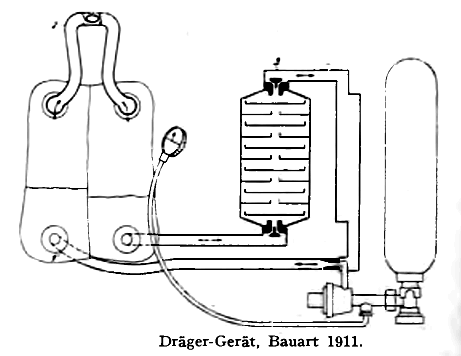

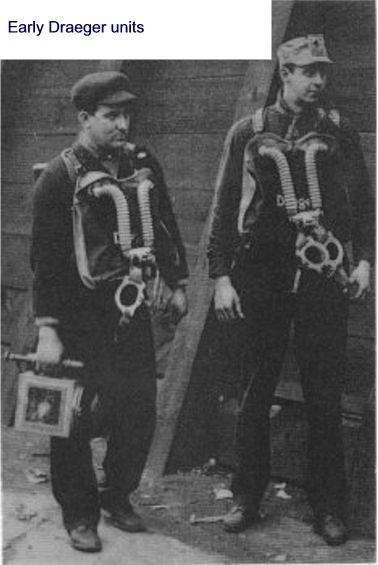
If you have any additional information or pictures please send them to add to this document!

Therebreathersite was founded by Jan Willem Bech in 1999. After a diving career of many years, he decided to start technical diving in 1999. He immediately noticed that at that time there was almost no website that contained the history of closed breathing systems. The start for the website led to a huge collection that offered about 1,300 pages of information until 2019. In 2019, a fresh start was made with the website now freely available online for everyone. Therebreathersite is a source of information for divers, researchers, technicians and students. I hope you enjoy browsing the content!
